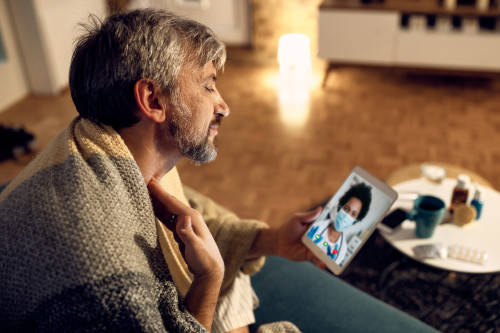The shift from in-person to virtual care was necessary for doctors during the peak of the pandemic. As a result, providers of all specialties were required to rethink how they conduct their appointments and manage their patient’s chronic illnesses. The aftereffects of the pandemic sparked interest for providers of all specialties to explore online platforms and expand their offerings for patient care.
Virtual care expands potential clientele for doctors and gives them the flexibility to work from any location. Not only that, but it also lends a helping hand to those patients who are home-bound or have difficulty traveling for their appointments. However, there are specialties where telehealth is certainly more practical and beneficial for both patient and provider.
-
Behavioral health
The most popular use for telehealth technologies is in the behavioral health sector. The stigma surrounding going to therapy and seeking mental care is a common setback for those who need it. Telehealth proves to be a safe and convenient option for getting mental and behavioral healthcare at home, whilst eliminating the need for travel, arranging child-care, or taking time off work. More importantly, it helps by making credible providers accessible to patients in areas in which they are not readily available. Platforms such as BetterHelp.com are big leaders in facilitating virtual mental healthcare for patients of all backgrounds. -
Cardiology
The biggest use of telemedicine in cardiology, or telecardiology, consists of providing consultations and ongoing monitoring for chronically ill patients. Using remote patient monitoring tools, doctors can assess and make decisions about ongoing care (like increasing medication doses) for their patients more quickly and efficiently, thus improving patient outcomes. Patients with the greatest need for remote cardiology consist of those who live far, have a busy schedule, have mobility difficulties, or require continuous care and monitoring. Since not all in-person care can be made virtual, patients benefitting the most from virtual care are those experiencing heart failure, systemic hypertension, or arrhythmia. -
Pediatrics and family medicine
All children and adolescents deserve high quality healthcare regardless of location, race, or socioeconomic status. Telehealth lowers geographical and/or logistical barriers to improve outcomes and reduce the total cost of care. Pediatricians can help patients manage conditions by providing tools for virtual visits, medication management, symptom surveys, and more. Children and adolescents are generally more comfortable at home, and telehealth can be used to help manage diabetes, asthma, speech therapy, autism support, and more. This can result in reduced emergency room visits, better patient outcomes, and less unexpected time off work for parents. -
Radiology
Telemedicine doesn’t just mean virtual visits and appointments with patients, it also refers to enabling doctors to interact more efficiently with colleagues. Teleradiology tools give radiologists working in a distant place the ability to analyze photos collected by ER teams–this is extremely useful in rural areas. Not only can it help make the correct diagnosis, it can also aid in early detection, which in the long run avoids unnecessary hospital visits. -
Dermatology
The beauty and cosmetic industry is booming, generating a high demand for teledermatology—specifically, specialists in the aesthetical procedure domain. The use of telemedicine in dermatology, or teledermatology, can dramatically reduce wait time and improve the probability of a patient getting a consultation with one or more providers, allowing for accurate diagnosis. -
Pathology
Another specialty leveraging telemedicine technologies is pathology providers. The use of telemedicine tools allows for training and education, second opinion diagnostics, and improving access to healthcare services in once-unreachable areas.
Without a doubt, there are patients who feel telemedicine is more convenient, but there are also many who still prefer in-person visits. While in-person care will never go away completely, providers across all specialties are looking to balance both in-person and virtual care for their clients with platforms such as Vosita. The COVID-19 pandemic acted as a catalyst for reinforcing and boosting the use of telemedicine across many specialties. Overall, telemedicine is a great step towards improving the efficacy of delivering quality healthcare and improving patient outcomes.





